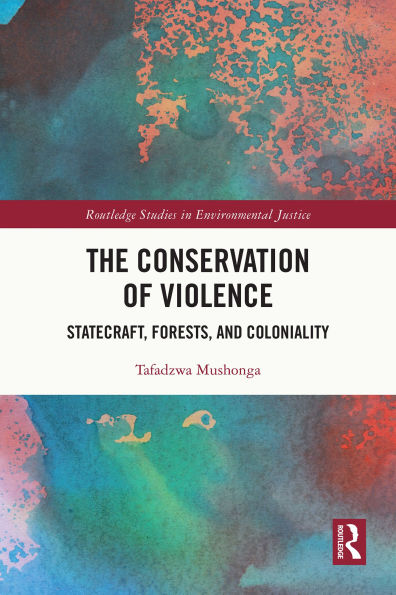The Conservation of Violence explores the governance of protected forests in Zimbabwe, highlighting the structural and operational mechanism through which violent tactics are produced, employed, and sustained to promote nature conservation. Drawing on political ecology, geography, and environmental politics, it examines the central role of the state in conserving conservation violence. The book presents contemporary cases studies of violence in conservation and introduces the concept of conservation of violence as an alternative framework for understanding the tenacity of violence in conservation areas across Africa. It also delves into the constitutionalisation of environmental rights, illustrating how these rights have been leveraged to enable and preserve conservation violence, as well as the ways in which militarisation fosters and circulates violence. By offering new ways for investigating violence in conservation, the book interrogates the complexities of dismantling entrenched systems of violence and provides insights into the theoretical and practical obstacles of transforming conservation ideologies. The explored include coloniality, nature-culture dichotomies, resource governance, extraction, capitalism, sustainability, policy and conservation law, regulation and policing, environmental rights, and environmental justice. The Conservation of Violence will be a significant contribution to the fields of political ecology, geography, development, environmental justice, and the broader environmental humanities.
The Conservation of Violence explores the governance of protected forests in Zimbabwe, highlighting the structural and operational mechanism through which violent tactics are produced, employed, and sustained to promote nature conservation. Drawing on political ecology, geography, and environmental politics, it examines the central role of the state in conserving conservation violence. The book presents contemporary cases studies of violence in conservation and introduces the concept of conservation of violence as an alternative framework for understanding the tenacity of violence in conservation areas across Africa. It also delves into the constitutionalisation of environmental rights, illustrating how these rights have been leveraged to enable and preserve conservation violence, as well as the ways in which militarisation fosters and circulates violence. By offering new ways for investigating violence in conservation, the book interrogates the complexities of dismantling entrenched systems of violence and provides insights into the theoretical and practical obstacles of transforming conservation ideologies. The explored include coloniality, nature-culture dichotomies, resource governance, extraction, capitalism, sustainability, policy and conservation law, regulation and policing, environmental rights, and environmental justice. The Conservation of Violence will be a significant contribution to the fields of political ecology, geography, development, environmental justice, and the broader environmental humanities.

The Conservation of Violence: Statecraft, Forests, and Coloniality
186
The Conservation of Violence: Statecraft, Forests, and Coloniality
186Related collections and offers

Product Details
| ISBN-13: | 9781040378120 |
|---|---|
| Publisher: | Taylor & Francis |
| Publication date: | 07/14/2025 |
| Series: | Routledge Studies in Environmental Justice |
| Sold by: | Barnes & Noble |
| Format: | eBook |
| Pages: | 186 |
| File size: | 1 MB |
